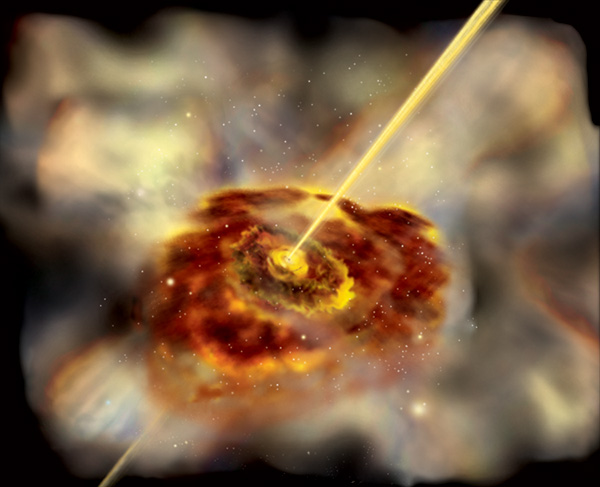General Relavity Passes Another Test
Part of my attraction to gamma-ray astronomy relates to the types of objects it observes. My graduate research focused on an object called Markarian 421. It is an active galactic nucleus (AGN) located about 360 million light-years away in the constellation Ursa Major. A massive black hole—in excess of a million times the mass of the sun—provides the engine generating the gamma rays in this object. As shown in the image below, a disk of material (known as an accretion disk) surrounds and feeds the black hole, giving rise to long jets emanating along the axis of the disk.

Astronomers used optical observations of another similar object, named OJ 287, to provide an important test of Einstein’s theory of general relativity (GR). At 18 billion solar masses, the black hole in the center of OJ 287 ranks as the most massive black hole known in the universe! Since 1983, a series of optical outbursts has allowed astronomers to determine that another, smaller black hole orbits OJ 287 and crosses the accretion disk surrounding OJ 287. An optical outburst or flash occurs each time the smaller black hole crosses the accretion disk.

With enough outbursts detected, astronomers calculated when the next outburst would occur. According to GR, the strong gravitational fields from the two black holes affect the timing of the pulses in two ways. First, the location of the closest approach of the smaller black hole moves around the larger black hole with each orbit; Mercury demonstrates this effect also. The fact that general relativity properly described this otherwise anomalous behavior served as one of the first confirmations for GR’s validity. Second, two close-orbiting massive objects emit gravitational radiation, which causes the orbit to shrink.
Scientists expected an outburst from OJ 287 in September 2007. Predictions accounting for the emission of gravity waves placed the outburst twenty days earlier than predictions without gravity wave emission. According to an article in Nature, the observed outburst occurred within one day of the prediction that included gravity waves.
These results buttress Einstein’s theory of general relativity by confirming the existence of black holes—which do not occur in Newtonian gravitational theories—and by accurately accounting for the emission of gravitational waves as predicted by GR. RTB’s cosmic creation model incorporates GR, thus, any confirmation of GR puts RTB’s model on firmer ground.




